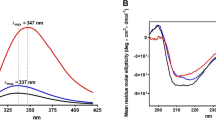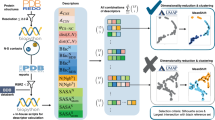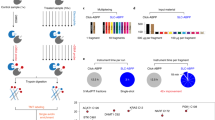Abstract
IN order to provide a test of the different mechanisms proposed for the alkaline degradation of disulphide groups in proteins, the amino-acid α,α′-dimethylcystine (I) has been synthesized and examined: 
This is a preview of subscription content, access via your institution
Access options
Subscribe to this journal
Receive 51 print issues and online access
$199.00 per year
only $3.90 per issue
Buy this article
- Purchase on SpringerLink
- Instant access to full article PDF
Prices may be subject to local taxes which are calculated during checkout
Similar content being viewed by others
References
Schöberl, A., Liebigs Ann., 507, 111 (1933). Speakman, J. B., Nature, 133, 930 (1933).
Rosenthal, N. A., and Oster, G., J. Soc. Cosmetic Chemists, 5, 286 (1954).
For reviews, see Neuberger, A., “Adv. Protein Chem.”, 4, 344 (1948). Tarbell, D. S., and Hamish, D. P., Chem. Reviews, 49, 1 (1951).
Author information
Authors and Affiliations
Rights and permissions
About this article
Cite this article
SWAN, J. Mechanism of Alkaline Degradation of Cystine Residues in Proteins. Nature 179, 965 (1957). https://doi.org/10.1038/179965a0
Issue date:
DOI: https://doi.org/10.1038/179965a0
This article is cited by
-
Unexpected mechanochemical complexity in the mechanistic scenarios of disulfide bond reduction in alkaline solution
Nature Chemistry (2017)
-
Influence of processing on the nutritional value of proteins
Qualitas Plantarum Plant Foods for Human Nutrition (1983)
-
Chemische und physikalische Untersuchungen an Keratinfasern
Kolloid-Zeitschrift & Zeitschrift für Polymere (1970)
-
Lanthionine Formation in Keratin
Nature (1961)
-
Permanent Set, Supercontraction, and Urea-Bisulphite Solubility–the Proton-Transfer Nature of some Changes in Keratin and the Analogy with Muscle Contraction
Nature (1959)



